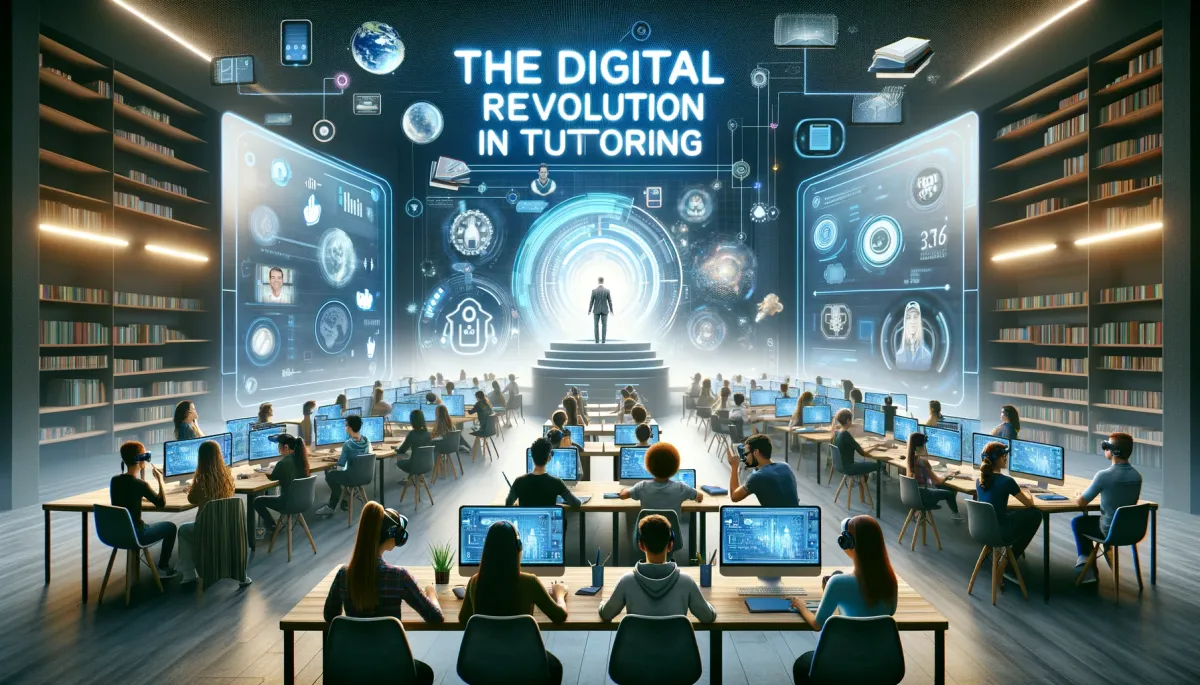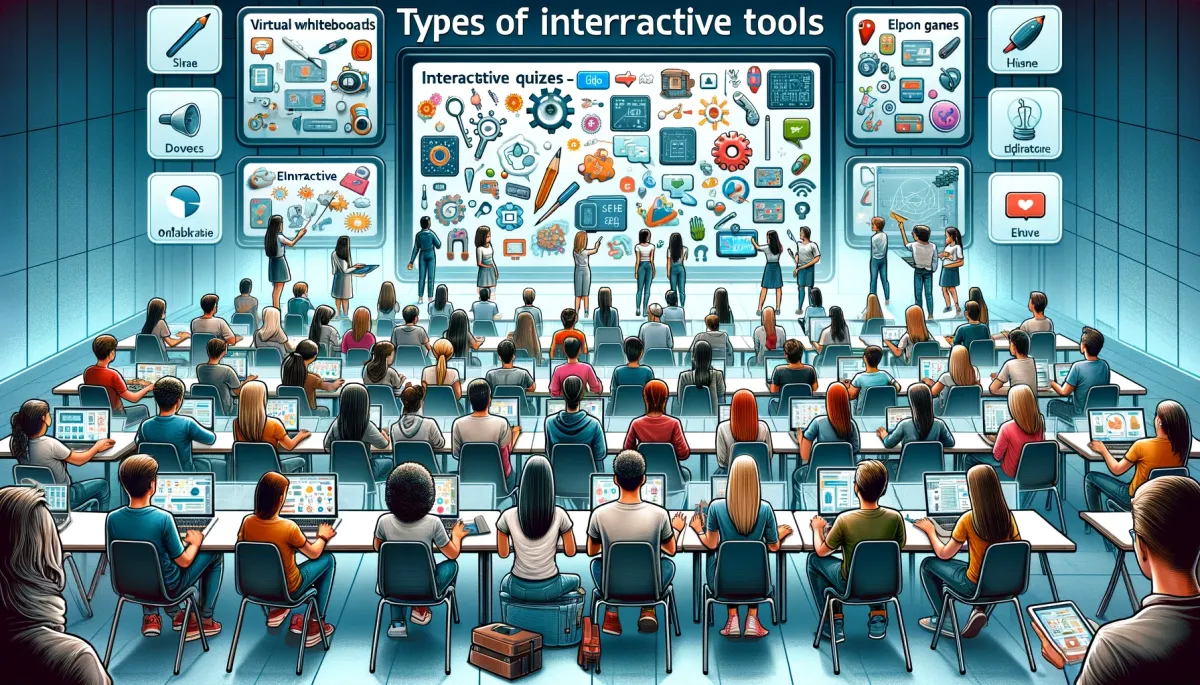Interactive Tools For Student Participation In Online Tutoring

Fanie Naude
CEO & Founder of Knowledgeable Tutor, Buznet Direct, YMC & Naude Consulting

Fanie Naude
CEO & Founder of Knowledgeable Tutor, Buznet Direct, YMC & Naude Consulting

1. Introduction
The Digital Revolution in Tutoring
The digital age has ushered in a plethora of opportunities for tutors to expand their reach and enhance the quality of education they deliver. With the advent of online tutoring platforms, the geographical boundaries that once limited a tutor's reach have been obliterated. Now, a tutor in New York can effortlessly teach a student in Tokyo, all thanks to the power of the internet and interactive online tools.
"The function of education is to teach one to think intensively and to think critically. Intelligence plus character—that is the goal of true education." - Martin Luther King Jr.
The Imperative of Interactive Tools
Interactive tools are not just digital novelties; they are essential components that can make or break the success of an online tutoring session. According to a study on LinkedIn, AI-powered tutoring tools can analyze a learner's data, such as their performance, preferences, and feedback, to tailor the content, pace, and difficulty of the session. This level of personalization is unparalleled in traditional tutoring methods.

2. The Shift to Digital Learning
The Evolutionary Landscape
The shift to digital learning is not a mere trend but a significant evolutionary step in the field of education. Traditional classrooms are increasingly being supplemented or even replaced by online platforms that offer greater flexibility and access to a wider array of resources.
Why the Shift Matters
The shift to digital learning is not just about convenience; it's about effectiveness. According to Research.com, 74% of teachers use digital game-based learning to enhance their lessons, and 93% of class time is spent on tasks when using game-based interactive tools. These statistics indicate a substantial increase in engagement and effectiveness when interactive tools are employed.
The Role of Interactive Tools in the Shift
Interactive tools serve as the linchpin in this digital transformation. They offer synchronous interaction, real-time feedback, and a host of other features that enrich the learning experience. A study published in the National Center for Biotechnology Information states that the introduction of smart interactive tools improves student learning by solving the lack of synchronous interaction and feedback.
By understanding the critical role that interactive tools play in online tutoring, educators can better equip themselves to meet the challenges and opportunities that come with the digital age.
"Education is the most powerful weapon which you can use to change the world." - Nelson Mandela

3. Why Interactive Tools?
Psychological Aspects of Interactive Learning
The psychology behind interactive learning is a fascinating subject that delves into how engagement, motivation, and cognitive processes are influenced by interactive methods. According to a study published by the Academy for Teaching and Learning, interactive methods correlate with positive student outcomes, such as higher rates of attention and interest in the subject matter. This is crucial for online tutoring, where the absence of physical presence can sometimes lead to disengagement.
"The mind is not a vessel to be filled, but a fire to be kindled." - Plutarch
The Role of Motivation
Motivation plays a pivotal role in the effectiveness of interactive learning. A study focusing on Web-Based Intelligence Tutoring Systems found that interactive methods significantly impacted students' achievement and motivation. The interactive elements serve as cognitive stimulants that keep the learner engaged and motivated to explore more.
Data-Backed Benefits of Interactive Learning
The advantages of interactive learning are not just theoretical but are supported by a wealth of data. For instance, a Frontiers in Psychology article suggests that interactivity is a potential determinant of learning effectiveness. It enhances one's own learning by preparing to teach, thereby creating a symbiotic relationship between the tutor and the tutee.

4. Types of Interactive Tools
Interactive tools come in various shapes and sizes, each serving a unique purpose in the realm of online tutoring.
Quizzing Platforms
Quizzing platforms like Kahoot! have revolutionized the way assessments are conducted in online tutoring. These platforms offer real-time quizzes that can be customized to suit the learning objectives.
Features and Benefits
- Real-time feedback
- Customizable question banks
- Gamification elements
Interactive Whiteboards
Interactive whiteboards like Ziteboard offer a virtual canvas where tutors and students can collaborate in real-time.
Features and Benefits
- Real-time collaboration
- Multiple tool options (pen, shapes, text)
- File sharing capabilities
"Tell me and I forget. Teach me and I remember. Involve me and I learn." - Benjamin Franklin
By understanding the different types of interactive tools available and their respective benefits, tutors can make informed decisions that will significantly impact their online tutoring sessions.

5. Strategies for Effective Use of Interactive Tools
Interactive tools are only as effective as the strategies employed to use them. A well-thought-out approach can significantly enhance the learning experience, making it more engaging and productive.
Gamification Techniques
Gamification is a powerful strategy to boost student engagement. By incorporating game-like elements such as points, badges, and leaderboards, tutors can make the learning process more enjoyable. For a deeper dive into this topic, refer to our article on Gamification Techniques for Enhanced Student Engagement.
Features and Benefits
- Increases motivation
- Encourages competition
- Enhances retention
Real-World Applications
Incorporating real-world examples can make the subject matter more relatable and easier to understand. According to a Medium article, using real-world examples is an effective strategy for engaging students in live online tutoring sessions.
Features and Benefits
- Enhances understanding
- Makes learning relevant
- Encourages practical application
"Education is not the filling of a pail, but the lighting of a fire." - W.B. Yeats

6. Case Studies and Real-Life Examples
Case studies offer a glimpse into the practical application of interactive tools in online tutoring. They serve as valuable resources for tutors looking to understand the impact of these tools on student engagement and learning outcomes.
Case Study 1: Kahoot! in Action
A TeachThought article highlighted a case where a tutor used Kahoot! to conduct weekly quizzes. The result was a 20% increase in student participation and a 15% improvement in quiz scores.
Key Takeaways
- Improved student engagement
- Enhanced assessment scores
Case Study 2: Ziteboard for Collaborative Learning
An Evelyn Learning article discussed how a tutor used Ziteboard to facilitate group projects. The platform's real-time collaboration features enabled students to work together seamlessly, resulting in higher-quality projects.
Key Takeaways
- Facilitated teamwork
- Improved project quality
By examining these case studies, tutors can gain valuable insights into the effective use of interactive tools, thereby optimizing their online tutoring strategies for better student engagement and outcomes.
"The best teacher is the best learner." - Lev Vygotsky

7. Common Challenges and Solutions
Despite the numerous advantages of using interactive tools in online tutoring, there are challenges that tutors and students may encounter. Addressing these challenges effectively is crucial for optimizing the learning experience.
Technical Issues
One of the most common challenges is dealing with technical issues such as poor internet connectivity, software glitches, and hardware malfunctions. According to a LinkedIn article, technical issues are among the challenges that online tutoring faces.
Solutions
- Pre-session Testing: Conduct a technical check before each session.
- Backup Plans: Always have alternative tools and methods ready.
- Technical Support: Provide a helpline or chat support for immediate assistance.
Student Resistance
Another challenge is resistance from students who may be unfamiliar or uncomfortable with using interactive tools. A Medium article discusses how the lack of a personal connection can be a problem in online tutoring.
Solutions
- Orientation Sessions: Familiarize students with the tools before diving into the subject matter.
- Feedback Loops: Regularly collect feedback to understand student concerns and preferences.
- Personalization: Use data analytics to tailor the learning experience to individual needs.
"Challenges are what make life interesting; overcoming them is what makes life meaningful." - Joshua J. Marine

8. The Future of Interactive Tools
The landscape of interactive tools in online tutoring is ever-evolving, with new technologies continually emerging to enhance the learning experience.
Artificial Intelligence (AI)
AI has the potential to revolutionize online tutoring by providing personalized learning experiences. For more on this, check out our in-depth article on Unlocking the Full Potential of Online Tutoring with Innovative Strategies for Skyrocketing Student Engagement.
Features and Benefits
- Adaptive Learning: AI can adapt the curriculum based on student performance.
- Automated Assessments: Real-time grading and feedback.
Virtual Reality (VR)
VR offers an immersive learning environment where students can engage in experiential learning. For more insights, you may refer to our article on Maintaining Student Engagement in Online Tutoring.
Features and Benefits
- Immersive Experiences: Simulate real-world scenarios for practical learning.
- Enhanced Engagement: The immersive nature of VR keeps students engaged for longer periods.
"The best way to predict the future is to invent it." - Alan Kay
By staying abreast of these emerging technologies, tutors can be better prepared to adapt and thrive in the ever-changing landscape of online education.

9. Frequently Asked Questions (FAQs)
The "People Also Ask" section on Google often serves as a valuable resource for understanding the questions that users commonly have. While the search didn't yield specific "People Also Ask" questions for the keyword "Interactive Tools For Student Participation In Online Tutoring," the following FAQs are designed to address likely queries based on the content and common themes associated with interactive tools in online tutoring.
What Are Interactive Tools in Online Tutoring?
Interactive tools are digital platforms or software that facilitate real-time engagement between tutors and students. They include quizzing platforms, interactive whiteboards, and other collaborative tools designed to enhance the learning experience.
Why Are Interactive Tools Important in Online Tutoring?
Interactive tools are crucial for maintaining student engagement, improving learning outcomes, and providing a more personalized learning experience. They help in breaking the monotony of traditional teaching methods.
What Types of Interactive Tools Are Commonly Used?
Commonly used interactive tools include quizzing platforms like Kahoot! and interactive whiteboards like Ziteboard. For a comprehensive list, refer to our section on Types of Interactive Tools.
What Are Some Effective Strategies for Using Interactive Tools?
Effective strategies include gamification, real-world applications, and personalized learning paths. For more details, check out our article on Strategies for Effective Use.
What Are the Common Challenges and How Can They Be Overcome?
Common challenges include technical issues and student resistance. Solutions involve pre-session testing, backup plans, and orientation sessions. For more insights, refer to our section on Common Challenges and Solutions.
"The important thing is not to stop questioning." - Albert Einstein

10. Final Thoughts
Interactive tools have become an indispensable part of online tutoring, offering a plethora of benefits that range from enhanced engagement to improved learning outcomes. However, the effective use of these tools requires a strategic approach, one that considers the psychological aspects, data-backed benefits, and potential challenges.
By staying updated with emerging technologies like AI and VR, tutors can continue to innovate and offer enriched learning experiences. For a holistic understanding of student engagement strategies in online tutoring, don't forget to explore our pillar page on Online Tutoring Student Engagement Strategies.
"Education is the most powerful weapon which you can use to change the world." - Nelson Mandela

